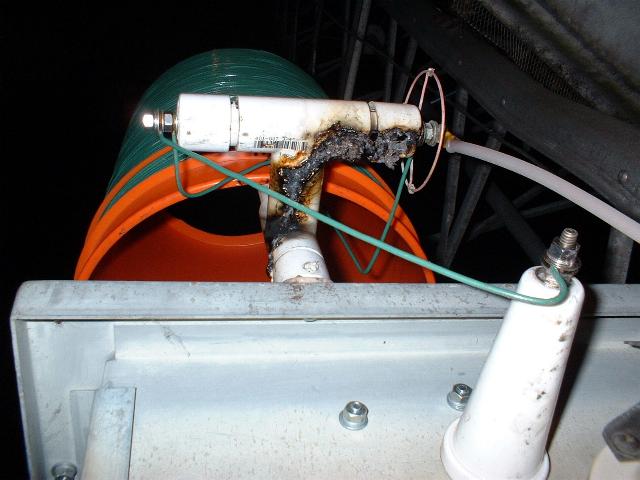
A Smoky Standoff Insulator Failure
by W5JGV
July 27, 2002
It has become pretty apparent in the past few days that PVC plastic insulators cannot handle the corona arcing generated by high power LF transmissions without special care and the use of corona rings.
Here are the results of the latest insulator failure caused by corona discharge.

This is the dual standoff "T" insulator which holds the upper and lower coil terminals of the external loading coil for LF operation at WC2XSR / 13.
The left terminal is the input connection to the loading coil, and that terminal does not have more than a few thousand volts on it. The right terminal is the output connection from the loading coil to the antenna, and it has about 35,00 volts on it when the transmitter is on the air.
The failure started at the right terminal at the point where corona discharge had started burning the PVC plastic. Although a corona ring had been added to the terminal after the previous damage occurred, I had failed to grind off the damaged PVC plastic, This allowed RF arcing to continue from the charred areas until the arc tracking migrated beyond the shielding area of the corona ring. When that happened, the destruction progressed rapidly until the arc tracking found a complete path to ground on the tuner cabinet. The antenna system was seriously detuned at that point, and the transmitter went off the air.
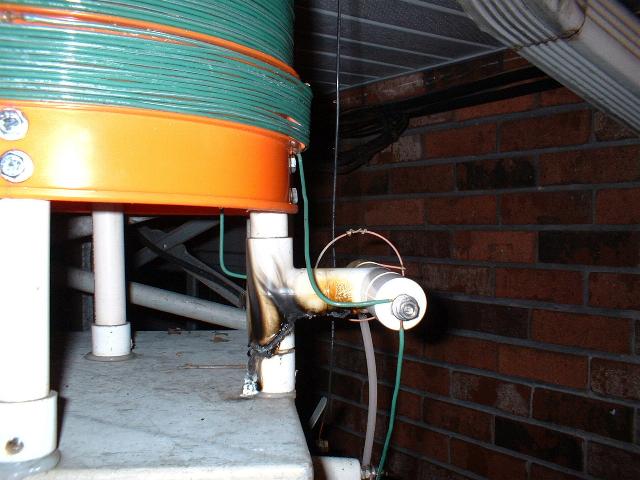
The arcing progressed back from the high voltage connection, then turned left along the pipe away from the input terminal (closest to the camera) and went towards ground potential down to the tuner cabinet.
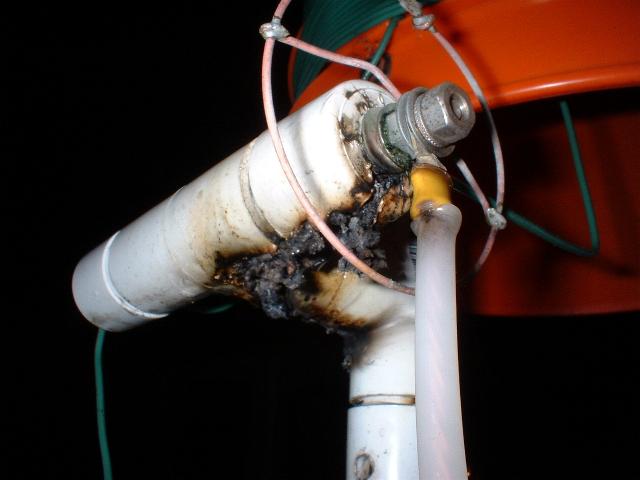
Here you can see how the arc tracked away from the high voltage connection and stayed "facing ground" as it went to the tuner cabinet.
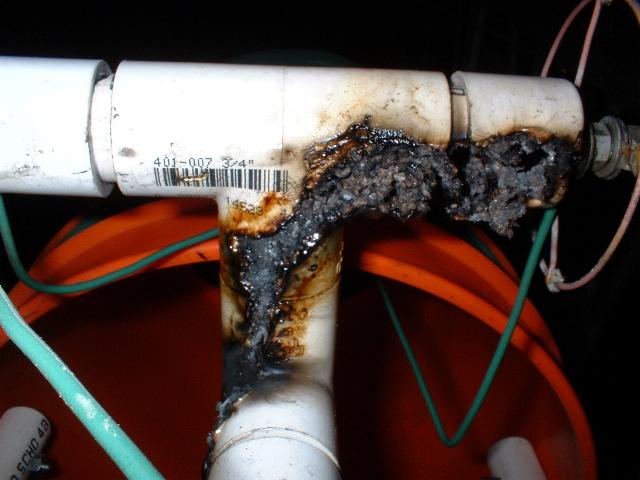
An underside view of the damage. Note the discoloration of the corona ring. This was shiny copper just a few days ago. The corrosion was caused by the Hydrochloric Acid released by the thermal decomposition of the PVC plastic. The fumes even corroded the stainless steel hardware on the insulator.
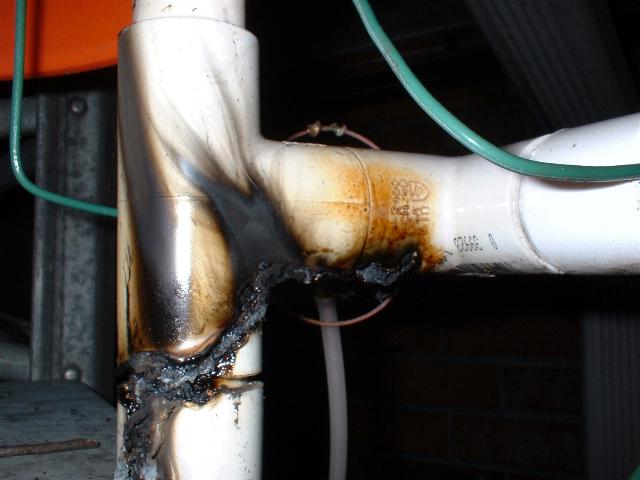
Judging by the combustion product flow marks, there must have been some flaming occurring at this point. Luckily, PVC pipe is rather difficult to make burst into flames, otherwise the entire loading coil might have been destroyed - and possibly the house close by set afire as well!
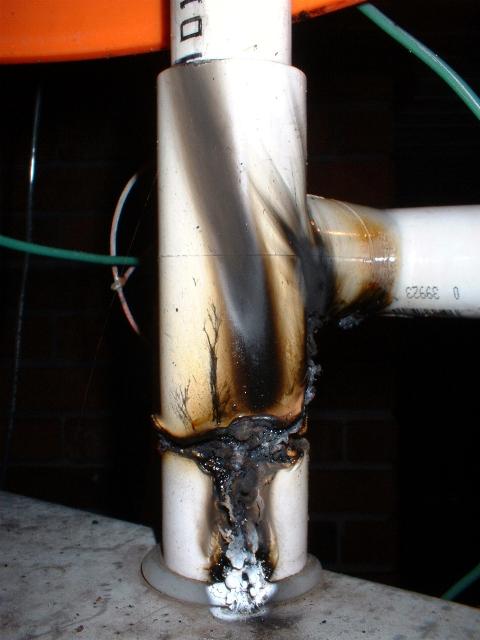
Here's where the RF arc finally made it to ground and shorted out the antenna system, causing the transmitter to shut down. Note the snow-white decomposition products of the silicone rubber under the PVC pipe cap. The rubber was used for waterproofing of the antenna tuner cabinet.
73, Ralph W5JGV
[Home]
The entire contents of this web site are Copyright © 2002 by Ralph M. Hartwell II, all rights reserved.